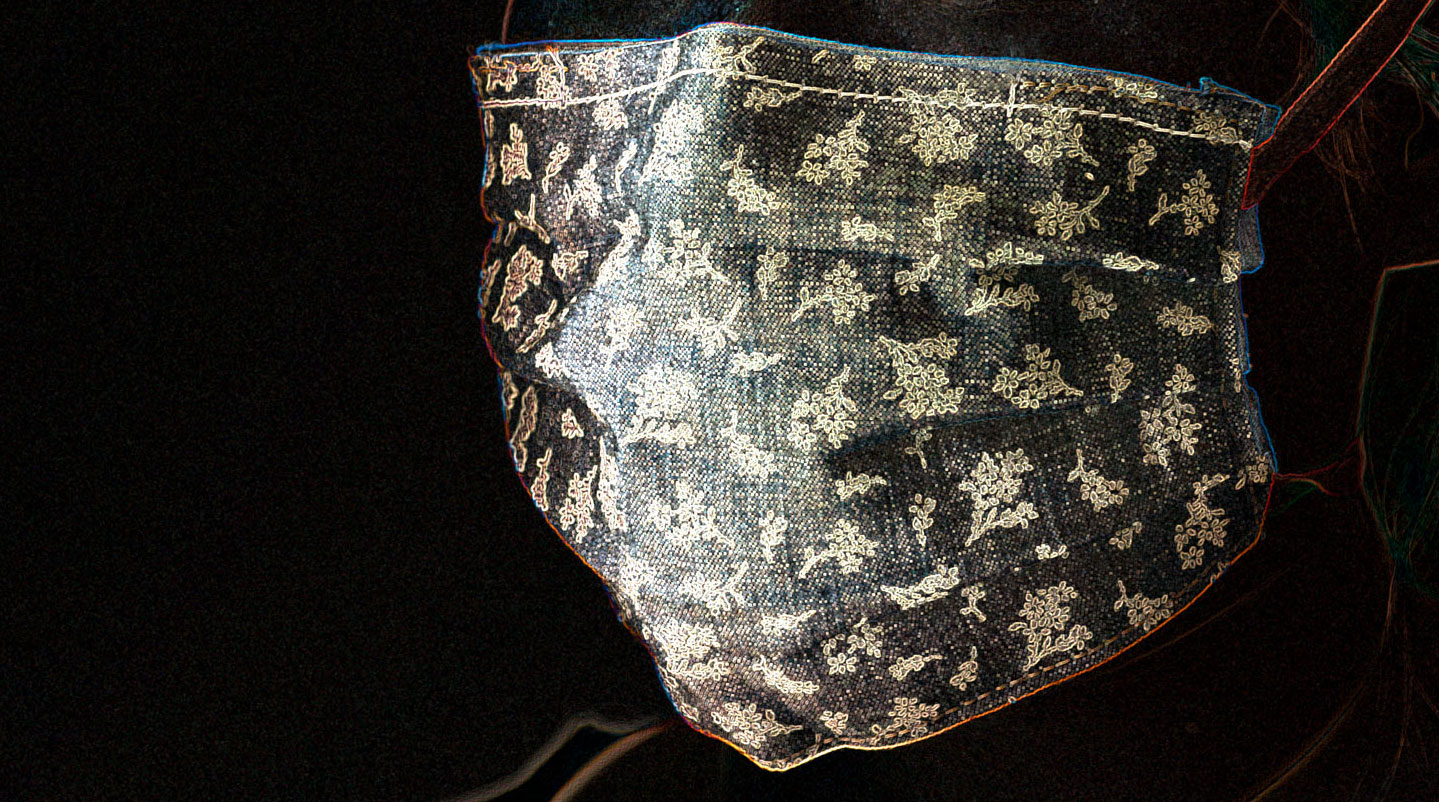The Mask of Denial
Photos by Forrest Anderson
I decided that I wasn’t going to write more about masks, but a string of recent events changed my mind.
Masks were the main topic of conversation at my hair salon, where my masked hair dresser told me that a customer had thrown a fit because the salon requires everyone who enters it to don masks.
A masked woman I met on the nature trail on which I exercise told me quietly that she has an immune problem and can’t risk venturing out much because so many other people won’t wear masks.
I stopped shopping at a local supermarket because I was uneasy with its employees and customers not wearing masks or social distancing.
The usually very responsible and careful father of several children who I love scoffed at mask wearing.
A relative with diabetes told an employee serving him in a store that he would be more comfortable if she would put on a mask, and she replied, “I don’t wear a mask because it smears my lipstick.”
A mother of a sick newborn who is in a natal ICU pleaded with the public to wear masks to help her avoid taking COVID-19 into the hospital when she goes to visit her baby.
I saw a large group of masked teenagers getting off the school bus rip their masks off as soon as the bus went around the corner. They then walked off together, none of them social distancing.
Since the pandemic began, the mask controversy has mystified me. Like many people, I took it for granted that masks could help retard the spread of germs and respiratory disease. This wasn’t exactly cutting edge science – isn’t it why doctors and dentists and their staffs wear masks? I had seen photos of past pandemics in which people wore masks. In Asia, where I had lived, it’s common for people to wear masks when they have a cold or air pollution levels are high. Nothing bad happens. It seemed like a foregone conclusion that mask wearing would help in a pandemic.
Was I missing something or were other people? I decided to do some research this week and ended up with 107 pages of information about mask wearing from public health officials, scientists, physicists, historians, psychiatrists, and other experts.
The Science of Masks
Confusion over mask wearing in the United States started at the beginning of the pandemic, when the Centers for Disease Control and Prevention and the World Health Organization didn’t recommend mask wearing because they didn’t think the disease was spreading as fast as it actually was. There also was a limited supply of masks available which needed to be funneled to health care workers, and Americans weren’t accustomed to wearing masks.
Both organizations soon changed their guidelines - the CDC in early April and the WHO in June - urging people to wear masks because the disease spread quickly and it had become clear that infected people could transmit it before they exhibited symptoms. Studies quickly showed that speaking, singing, coughing or sneezing could expel virus-carrying droplets that are the chief way the coronavirus spreads, much more so than touching contaminated surfaces.
At this point, we know that up to 40 percent of people infected with the virus may have no symptoms, but they can still spread virus-laden droplets when they talk, cough or sneeze. If unchecked, the droplets evaporate into tiny particles that can linger in the air for up to 30 hours and as far as 26 feet away from the person who expelled them. We normally don’t understand this well because our breath is invisible, but it’s the basic mechanism by which we can see our breath in cold weather. What we see is a mixture of gases, including water vapor.
Masks trap these droplets before they can evaporate and linger in the air, so regular mask wearing inhibits spreading at the source.
Because tiny virus particles can linger for so long in the air, it is not possible to determine everyone who has become infected with the virus so everyone has been asked to wear a mask in public.
The risk of contracting the virus and getting very ill from it is dependent partly on a person’s total exposure to it. Called the virus load, this is the number of virus particles that a person comes into contact with. This is why health care workers are at greater risk of becoming very ill if they are working around coronavirus patients all the time, and why mask wearing, physical distancing, being outdoors, hand washing and not touching our face are effective preventive measures. They reduce the overall virus load to which we are exposed.
Mask wearing has been found to be so effective in reducing infection that CDC Director Robert Redfield said in mid-July that the pandemic could be brought under control over four to eight weeks if “we could get everyone to wear a mask right now.” He highlighted new studies showing how masks help reduce transmission.
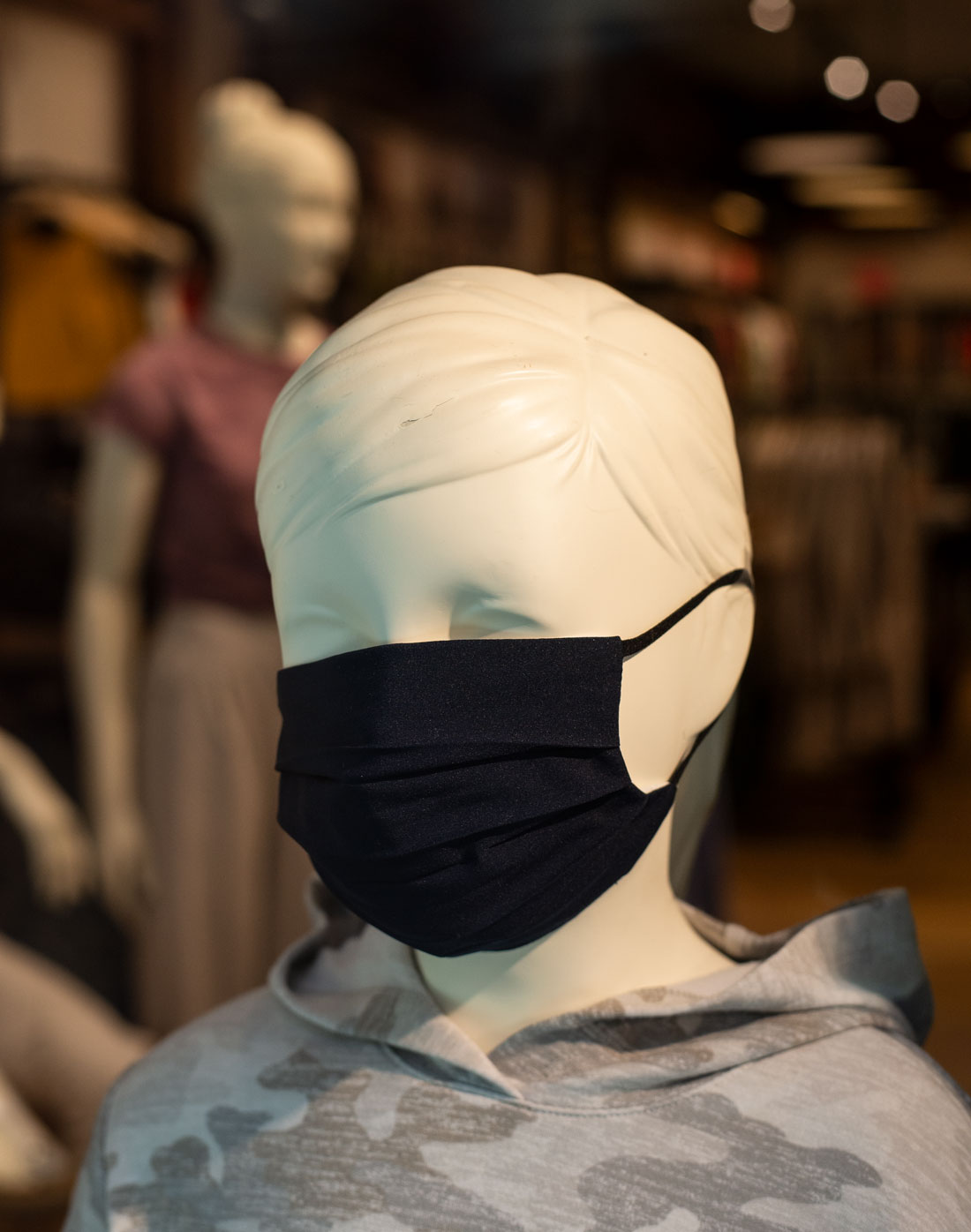
Lab experiments have shown that people generate hundreds of droplets when speaking a simple phrase but nearly all of them are blocked when the mouth is covered by even a damp washcloth. Other research showed that people who wore a mask emitted significantly reduced amounts of viruses in droplet and aerosol form.
The strongest evidence in favor of mask wearing has been comparisons of the COVID-19 spread rate before and after mask mandates in 15 states and the District of Columbia. Mask mandates are estimated to have prevented between 230,000 and 450,000 cases by late May alone. Mask mandates contributed to a slowdown in the rate of new cases that became more pronounced over time. Model simulations from New York and Washington indicate that widespread use of masks can significantly reduce transmission of COVID-19 and decrease the number of hospitalizations and deaths.
Wearers’ contagiousness drops by as much as 50 percent if they wear a mask, according to physics studies at the University of Colorado, and a wearers’ chance of getting the virus falls by 30 percent.
A study of coronavirus deaths across 198 countries found that in those countries in which mask wearing is a cultural norm or government policies favor mask wearing, death rates from coronavirus are lower.
The Institute of Health Metrics and Evaluation has projected that the virus death toll in the United States will rise to nearly 250,000 by Nov. 1. However, the institute has suggested that 33,000 coronavirus deaths could be avoided by October 1 if 95 percent of the population wore masks in public. Even in areas where few people are wearing masks, health experts say people can reduce their chances of getting the virus by wearing one.
The ideal is that 100 percent of the population wear masks, but if 80 percent wore them, experts say that masks would reduce the spread of the virus more than implementing strict lockdowns, which devastate the economy. Near-universal mask wearing alone could turn the tide of the pandemic and have a positive economic impact of thousands of dollars per person. Goldman Sachs estimated that masks could prevent further lockdowns that will otherwise wipe out 5 percent of GDP.
Evidence from studies in a variety of fields is converging into the view that until vaccines and therapeutic drugs for the virus are available, masks are the most effective way to slow the pandemic’s spread and keep the economy working. The science of masks has evolved during the pandemic and further studies will refine our knowledge but are unlikely to change this consensus about masks’ usefulness. The results support a body of pre-pandemic studies from different countries that cloth masks provide some protection against airborne viruses.
Even in cases where people contract coronavirus, a July study concluded that masks can result in a milder infection.
So how are we doing?
The use of cloth face coverings in public increased to 76.4 percent in May, compared to 61.9 percent in April, according to internet surveys. However, July surveys indicated that nearly nine in 10 Americans said they had used a mask in the past week, but less than half were always covering their faces in public. Just 44 percent always were wearing a mask outside their homes, while 28 percent did so “very often.” Thirty percent reported doing so less often, 11 percent sometimes, 4 percent rarely, and 14 percent never.
More than half of women, Democrats, Northeasterners and people with annual household incomes under $36,000 said they always use masks outside their homes, while a majority of men, people from other regions and those with incomes above $36,000 said they wore masks less often. A majority of Republicans said they wore masks less frequently, with 27 percent saying they never did.
Resistance to Masks
Probably the number one reason for resistance to masks is discomfort. The surveys indicate that many people see themselves as willing to wear masks, but their actual level of mask compliance is significantly lower. It’s one more thing to think about during a stressful time, and many people don’t do it consistently.
The experts say the most important factor in the effectiveness of masks is not the material from which they are made, but how comfortable they are to wear consistently. No mask is 100 percent effective, but any mask that covers the nose and mouth and will be worn consistently reduces the risk substantially.
The exception is masks with valves such as the ones used in construction to prevent dust inhalation. The valves close when the wearer breathes in, but open when they breathe out. This allows droplets to escape. Some areas such as San Francisco have specified that masks with valves don’t comply with their mask orders.
The good news is that the best masks are homemade layered cloth ones, which function as well or better than surgical ones, according to studies. The WHO recommends a cloth mask with at least three layers of different materials. The outer layer can be a combination of cotton, polyester, nylon or rayon. The middle material can be disposable facial tissues. Soft cotton works well as the inner layer because it draws moisture away from the face.
Duke University researchers found that two-layer pleated masks perform better than one-layer cotton ones and knitted ones, but all three were superior to wearing bandanas or not wearing a mask. The most effective mask was a well-fitted one of two layers of cotton quilting fabric, a study by researchers at Florida Atlantic University published in June concluded.
A single-layer cloth mask made of T-shirt fabric will block less than 10% of droplet particles, while tightly woven cotton ones block 80 percent. Wearing masks reduces the distance that droplets travel by more than half. An uncovered cough causes droplets to travel an average of 8 feet, while the best masks reduce that to 2.5 inches.
This is good news because homemade cotton masks can be laundered, and reusability is important for consistent mask wearing over the long term.
The common practices of pulling one’s face covering down below one’s nose removes almost all protection.
Scientists have concluded that face shields can significantly reduce short-term exposure to larger airborne particles, but are less effective against smaller airborne particles which can be inhaled through gaps between the shield and the face. As a result, the CDC doesn’t recommend shields for everyday activities or as a mask substitute.
The Safety of Masks
Scientists have debunked the misconception that masks trap excessive carbon dioxide which could cause brain damage. Leading medical groups said in a joint statement in July, “Individuals with normal lungs, and even many individuals with underlying chronic lung disease, should be able to wear a non-N95 facial covering without affecting their oxygen or carbon-dioxide levels.”
Research also has established that masks don’t encourage people to touch their face or not social distance or wash their hands regularly. People actually touch their faces less with masks and are more cautious with social distancing when wearing them.
A small minority of people may not be able to wear face coverings for physical or mental health reasons, although there is no list of recognized disabilities that prevent people from doing so. These people should be especially careful to physically distance from other people in public. Many states have medical exemptions for masks and allow people to temporarily remove their face covering when communicating with people who are deaf or hard of hearing and or have a disability that makes communication difficult while wearing a face covering. Generally speaking, people who claim mask exemptions for medical and mental health conditions and disabilities don’t have to provide proof, but businesses are not required to allow them to enter without a mask.
Children under two years old should not wear masks because of a risk of suffocation.
Experts say even people who live in an area with a low number of cases should wear face masks because the case count doesn’t account for many cases in which an infected person doesn’t feel sick or get tested.
As the economy opened and more people left home more frequently, many also relaxed mask wearing. In their minds, it was back to business as normal. This conflicts with expert guidance that mask wearing is doubly important where people are leaving home more frequently.
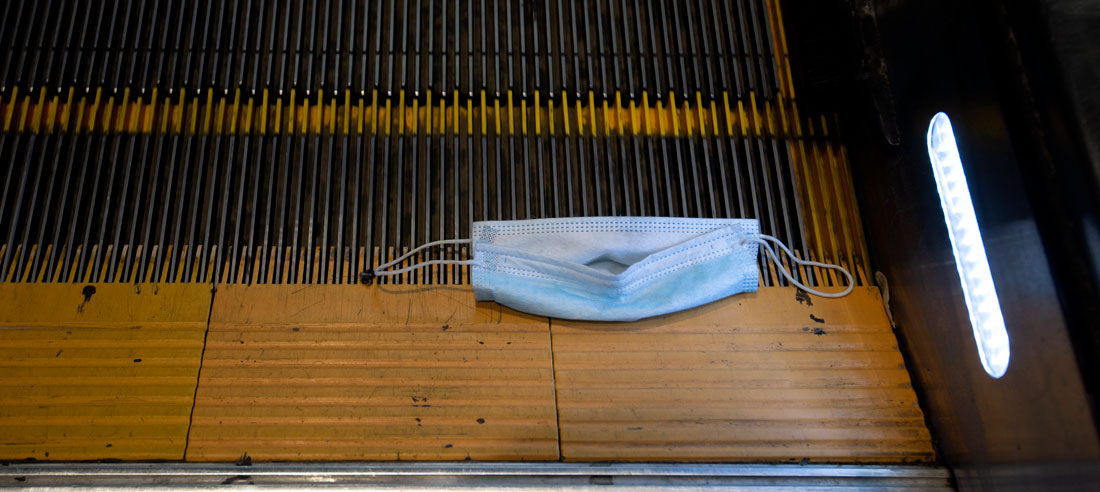
A discarded mask on an escalator in a parking lot. Many people chucked the masks when their local economies reopened after the first lockdown, although health officials say they are more important than ever to keep the economy open.
The Business of Masks
Part of the resistance to mask wearing is that it complicates business and work. The advantage to businesses of state mask mandates is that businesses can legally take disciplinary action against an employee who refuses to wear a face covering but doesn’t claim a medical exemption. Businesses have an obligation to protect their workers from hazards and to mitigate risks posed by people who refuse to wear a mask.
When states have mask mandates, a business can decline service to a customer who refuses to wear a face covering or offer them alternative services such as curbside pick-up or retrieving merchandise for them. Businesses can determine if they need to involve law enforcement in the event of an altercation. Businesses have no right to restrain or remove a non-compliant person or expect their employees to do so if it would put them in harm’s way. If a customer refuses to wear a mask, a business needs to take action to mitigate workers’ exposure to them, while making reasonable efforts to obtain the customer’s compliance.
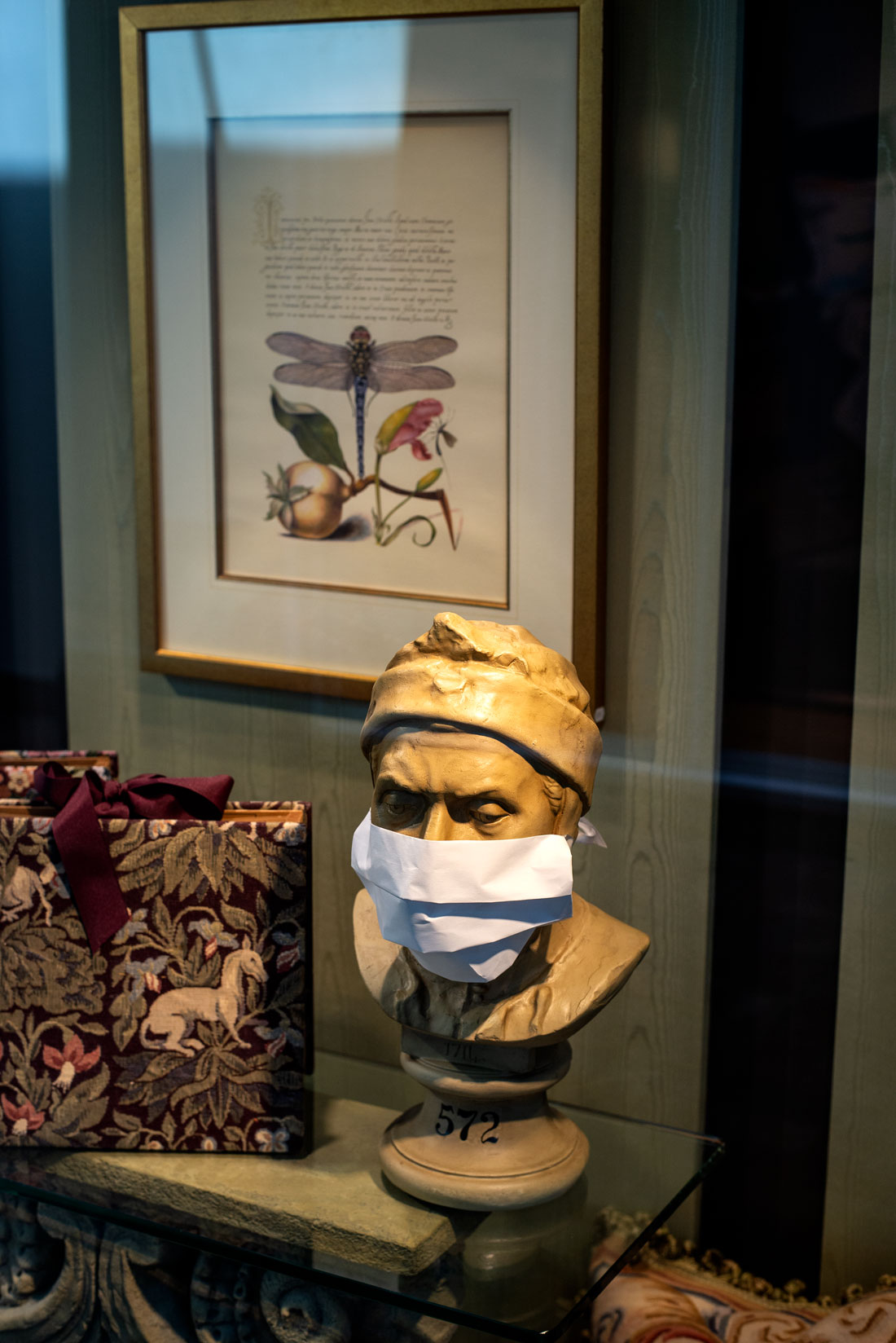
A window display in a high-end shop. Mask wearing needs a public relations face lift so that it becomes the cool thing to do.
Businesses can’t discipline workers for wearing masks if one isn’t required at a business. If a mask creates a job hazard because of such issues as fogging of eye or safety glasses, businesses should try to provide eye protection that is not susceptible to fogging before allowing a worker to work without a mask.
States that have mask orders required businesses where workers don’t want to wear masks because the work environment is warm to first try to adjust the environment or materials from which masks are made so that workers can be comfortable wearing them. If a business has exhausted all possible options for mitigating or eliminating a job hazard, a worker may remove their mask only when performing specific hazardous tasks.
Workers may remove a mask when they are alone in an office, room, cubicle, vehicle, in the cab of heavy equipment or machinery or in an enclosed work area. Cubicles must have four walls high enough to block the breathing zone of a person working in the cubicle or an adjoining one and the work must not require anyone to enter the cubicle. The worker must be at least six feet from other workers in adjoining cubicles. The worker must replace their mask if a person approaches or enters the cubicle or the worker leaves it or stands up.
In most cases where students are returning to schools, face coverings are required for all students, staff or other people in school buildings or offices or riding on school transportation vehicles.
Many parents are concerned about their children having to wear masks all day at school because their children don’t like to wear them. Child development experts suggest that children be allowed to play the role of a superhero by wearing a mask and that they are more likely to comply with mask wearing if they are allowed to pick out their own and perhaps decorate it. A number of companies such as ShopDisney.com, Amazon and Etsy offer selections of children’s masks with movie characters, sports teams, characters and interests on them. Children also are more likely to wear masks if their parents consistently wear masks in public and if they see other people doing so.
Masks, experts say, should be treated the same way as wearing bicycle helmets and car seats or seat belts – they should be consistently required.
Children may need breaks from wearing masks in public, and parents should allow this and take them outside to the car so they can remove their masks safely for a few minutes.
The Politics of Masks
The issue of mask wearing became a partisan political issue for some who felt that it is a threat to their political freedoms or a violation of their rights. For other people, this view is incomprehensible since the government already has in place a plethora of public health restrictions such as mandatory seat belts, speed limits and other traffic rules, alcohol restrictions, smoking bans in public places, health inspections and regulations for food businesses and vetting of drugs.

Traditionally in the United States, one’s personal rights stop when one infringes on the rights of others or could harm them. As mandatory mask orders went into place, some people interpreted them as infringing on their rights while others felt that people who didn’t wear masks were putting the general populace at risk. President Trump and many of his supporters’ reluctance to wear masks politicized the issue along party lines.
However, there are signs that this may be fading as the pandemic has spread and scientific evidence has solidified around the efficacy of mask wearing. Trump has softened his stance somewhat and many Republican leaders are wearing masks and encouraging Americans to do so.
Constitutional law experts whose writings I studied say current mandatory mask orders don’t present a constitutional violation. The government can restrict liberties in a crisis for the good of the public, and the current pandemic qualifies. Mask orders are constitutional because the medical consensus is that masks help reduce COVID-19 spread.
There is long-standing precedent for this. The Supreme Court ruled in 1905 that a Massachusetts law that forced adults to have mandatory free vaccinations in the wake of a smallpox outbreak did not violate constitutional rights, and that individual liberties can be subject to narrow restraint under the pressure of great dangers. The court said that unless the person subject to the vaccination could show it presented a real threat to their health, the government could require them to get the vaccinations.
It also has been argued that requiring businesses to enforce their customers and employees wearing masks is less restrictive than the alternative - that they shut down. Once the pandemic is controlled and there is effective treatment for the coronavirus, mandatory mask mandates would be reevaluated from a constitutional point of view. That is unlikely because the mandates are expected to be temporary.
Mask orders and lockdowns have been handled by the states because the federal government’s quarantine powers are limited largely to venues it controls such as ports of entry and air space. The 10th amendment, which reserves to the states powers that the Constitution has not delegated to the federal government or prohibited to the states, and almost 300 years of U.S. Supreme Court cases have established that state governments have primary authority to control the spread of dangerous diseases within their jurisdictions. This allows state governments to take public health emergency actions such as setting quarantines and business restrictions. States also have significant emergency powers to regulate public safety and health through their own state constitutions and legal precedent dating back to the early 1800s. Generally, it takes an act of Congress to preempt state constitutions.
State governments can override local government actions in a pandemic because of a legal argument called the Preemption doctrine, which stipulates that the law of a higher authority displaces the law of a lower authority when they are in conflict.
Mask orders are one of many requirements states can impose during a pandemic. They can quarantine individuals traveling from foreign countries and other states with high rates of the virus and require the individuals to get tested. They can quarantine individuals who have been exposed to the virus, have symptoms of it or test positive for it.
The federal government does have authority through the Centers for Disease Control and Prevention to monitor and respond to the spread of communicable diseases across national or state borders. The CDC’s authority to exercise quarantine and isolation powers for specific diseases is derived from the federal Public Health Service Act and presidential executive orders. CDC authority applies to a variety of contagious diseases including accute respiratory ones such as COVID-19.
The Psychology of Masks
Psychiatrists chalk opposition to mask wearing up to reactance theory, which states that people want freedom of choice and have negative reactions to their freedoms being restricted by external forces. It's true that masks are uncomfortable, but so are high heels, neck ties, special protective gear used in many jobs, sports and hobbies and a wide variety of other clothing that many people commonly wear either by choice or because of an organization's requirement.
Masks clearly have a public relations problem that goes beyond the simple piece of cloth. Some people feel compliance is weak or uncool, so they may refuse to wear a mask in a store that requires them to or refuse to socially distance around other masked people. Studies indicate that men are more likely to see mask wearing as a sign of weakness, although the death rates from the virus are notably higher among men. Psychiatrists say that men are generally less compliant with safety rules than women are. Almost 90 percent of the deaths tracked by the famous Darwin Award, which highlights the most avoidable deaths, are of men. Car insurance providers charge women lower premiums because men are behind most traffic accidents.

Masks have joined hard hats and construction boots as safety gear at this construction site.
Anti-maskers may be aggressive toward people who tell them they must wear a mask in a public place. There have been a number of such incidents, ranging from spitting on people when asked to wear a mask to stabbing them. This isn’t the first time that resistance to mask wearing has surfaced during a U.S. pandemic. In the 1918-1919 Spanish flu pandemic, people initially wore masks because they believed it was patriotic to do so to help protect troops that still were fighting in World War I. Still, many people thought they were uncomfortable or bad for business and some poked holes in their masks so they could smoke. Some people claimed that mask ordinances infringed on their civil liberties or gave people a false sense of security. Cities that passed masking ordinances imposed fines, prison sentences and had offenders’ names printed in the paper.
Communities that implemented stronger measures overall had lower deaths than those that didn’t. A 2007 analysis concluded that San Francisco would have reduced deaths from the Spanish flu by 90 percent if it had kept all pandemic restrictions in place longer, including mask wearing.
It's reasonable to assume that most people will act rationally when confronted with the evidence of a public health threat, but many studies have concluded that that isn't the case. Facts are not enough to change behavior. In 1966, the U.S. surgeon general first warned about the link between cigarettes and cancer, but cigarette smoking peaked in 1981 - 15 years later. My otherwise intelligent aunt, who smoked throughout those years, denied cigarettes had any negative impact on her health even as she was dying of lung cancer. She wasn't alone. Scientists who study this phenomenon call it the cultural cognition of risk. Once people choose what they want to believe, they become more hardened in those beliefs the more evidence accumulates that challenges our beliefs. This is because people hate being told they are wrong more than anything, even if they are wrong.
In the case of masks, they have a significant image problem. The pandemic is traumatizing but invisible and masks are its most visible symbol. People will willingly wear all kinds of uncomfortable items but they either have to be forced to by workplace rules, for example, or marketing has to convince them that those items are cool. Public health officials who are making their lives more difficult in other ways as well are not attractive purveyors of the benefits of mask wearing for many people.
A key reason why some people refuse to wear a mask, say some experts, is that denial is a powerful defense mechanism against the fear of an unprecedented serious threat. Not wearing a mask is a way for people to avoid the issue, and many have gotten away with it because they haven't contracted the virus. Unfortunately, however, not taking the precaution of wearing a mask ultimately feeds the overall pandemic. The news and social media have been flooded with warnings from people who contracted the virus after not taking mask precautions.
Many people are simply weary of the pandemic and want to move forward and regain control of their lives. The mask has become the unwelcome icon of an exhausting crisis that is seen as not having a solution.
Because people who contract the virus suffer from it at home or in hospitals where they are isolated, many people have not seen the virus’ consequences up close. Restrictions on funerals make the huge death toll a private one that is not seen by most people. This makes it harder for people to get their head around the threat to everyone or to think that it affects them. Mask compliance is notably more prevalent in areas where larger outbreaks have occurred, indicating that people change their behavior when the threat becomes more immediate to them personally.
Denial extends well beyond mask non-compliance to gathering in large family groups. Often people exist in bubbles of people who believe the same way they do and follow the same social rules even when they conflict with national guidelines. The bubble is popped only when someone they know and care about contracts the virus and becomes seriously ill or dies. Epidemiologists say, however, that such gatherings and people not wearing masks are main causes of the spread of the virus.
Unlike the inconvenient but harmless wearing of masks, the mask of denial has become highly dangerous because of the role it has played in making the U.S. outbreak by far the world’s worst. While none of us can be blamed for feeling confused about masks when the pandemic began, the evidence is now overwhelming that consistently wearing simple cloth masks can turn the pandemic around and avoid tens of thousands of deaths. It’s high time we all added mask wearing at least temporarily to the list of annoying but necessary activities such as fastening our seat belts and stopping at stop lights that we do every day, because consistently wearing masks is one of the fastest ways back to normal.
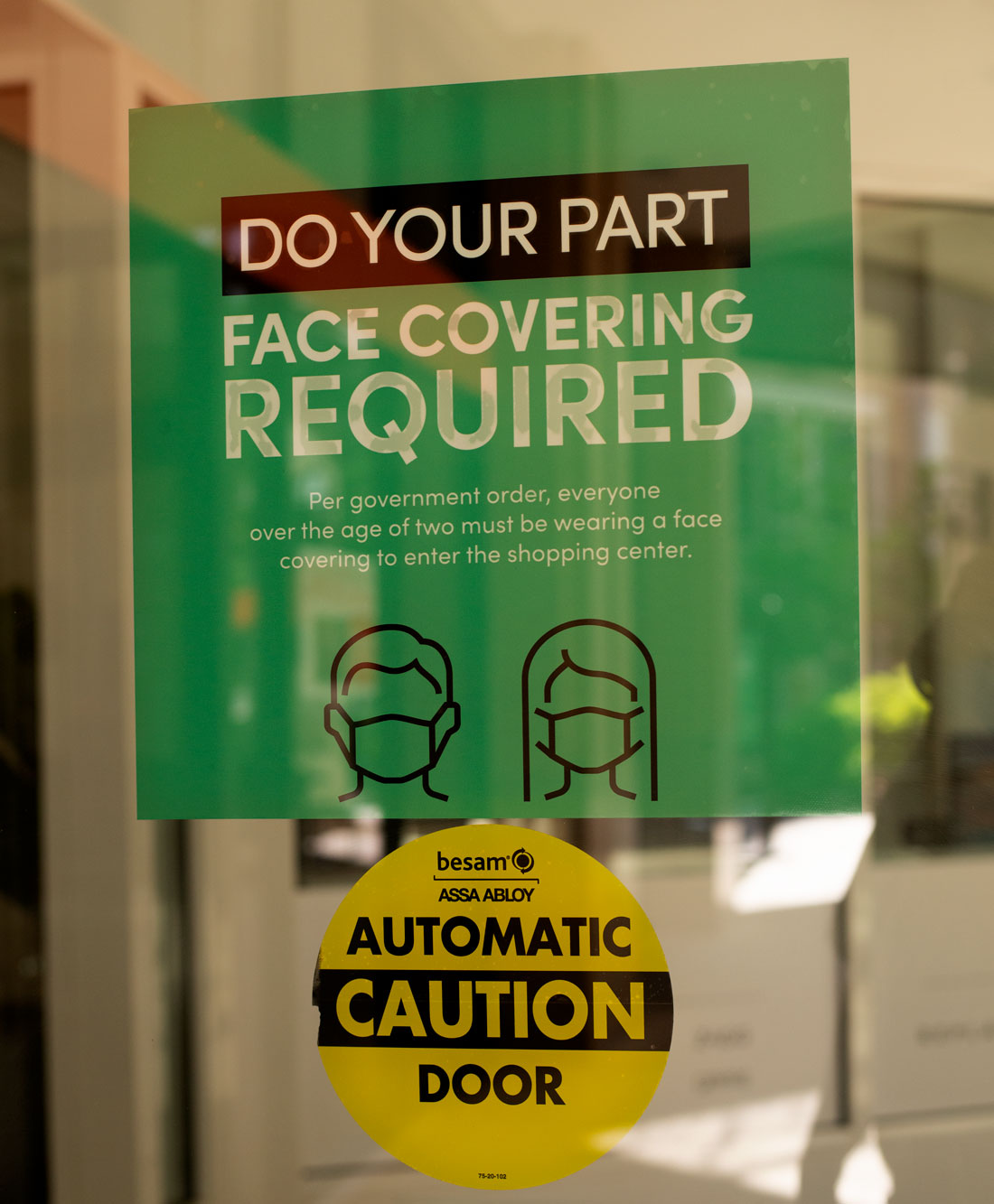
The mask of denial comes off when we see mask wearing as what it is - a simple, inexpensive but effective safety measure that can help bring the pandemic under control and keep our economy working.
Check out these related items
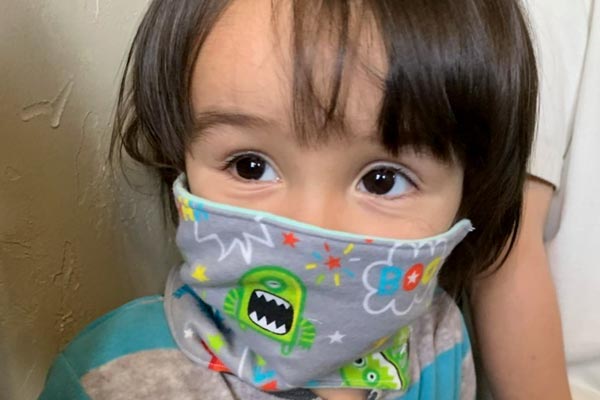
Dispatches from the Home Front
This photo essay shows what it is like to be a typical American family sheltering at home during the COVID-19 crisis.

Let’s Get to Work - From Home
Remote work is one of the best ways to limit the coronavirus and keep the economy going. Here's a guide to how to work from home.
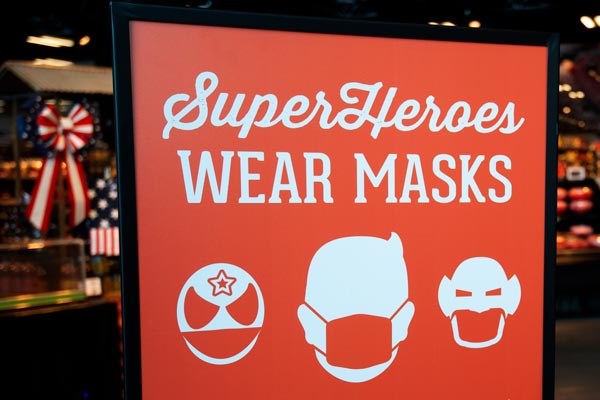
Selling Happiness and Security
As businesses are scrambling to adjust to a challenging economic environment, some are thriving or recovering. Here are reasons why.
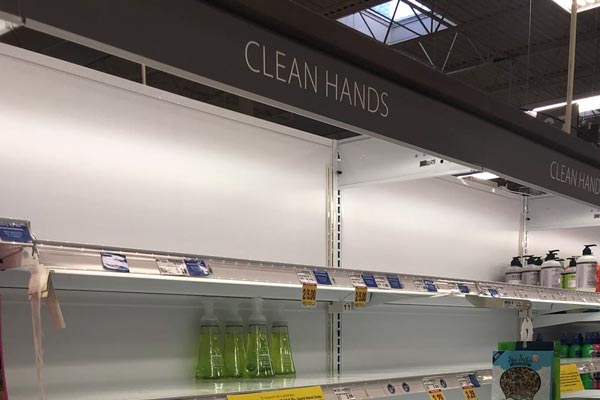
Signs of the Times in Stores
During the pandemic, here are signs of the times at stores with shortages that also are trying to maintain social distancing.

Store What You Eat Guidelines
The pandemic has been a major wake-up call about planning, home storage and preparation for crises. Here are some guidelines.
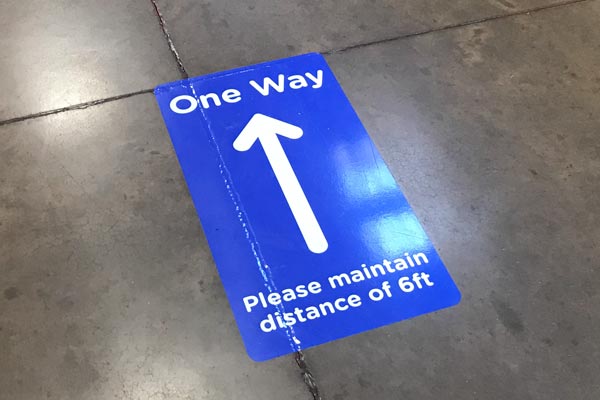
What does the future hold?
Dozens of experts’ analysis of long-term trends can help us identify the challenges and opportunities amid the COVID-19 pandemic.
